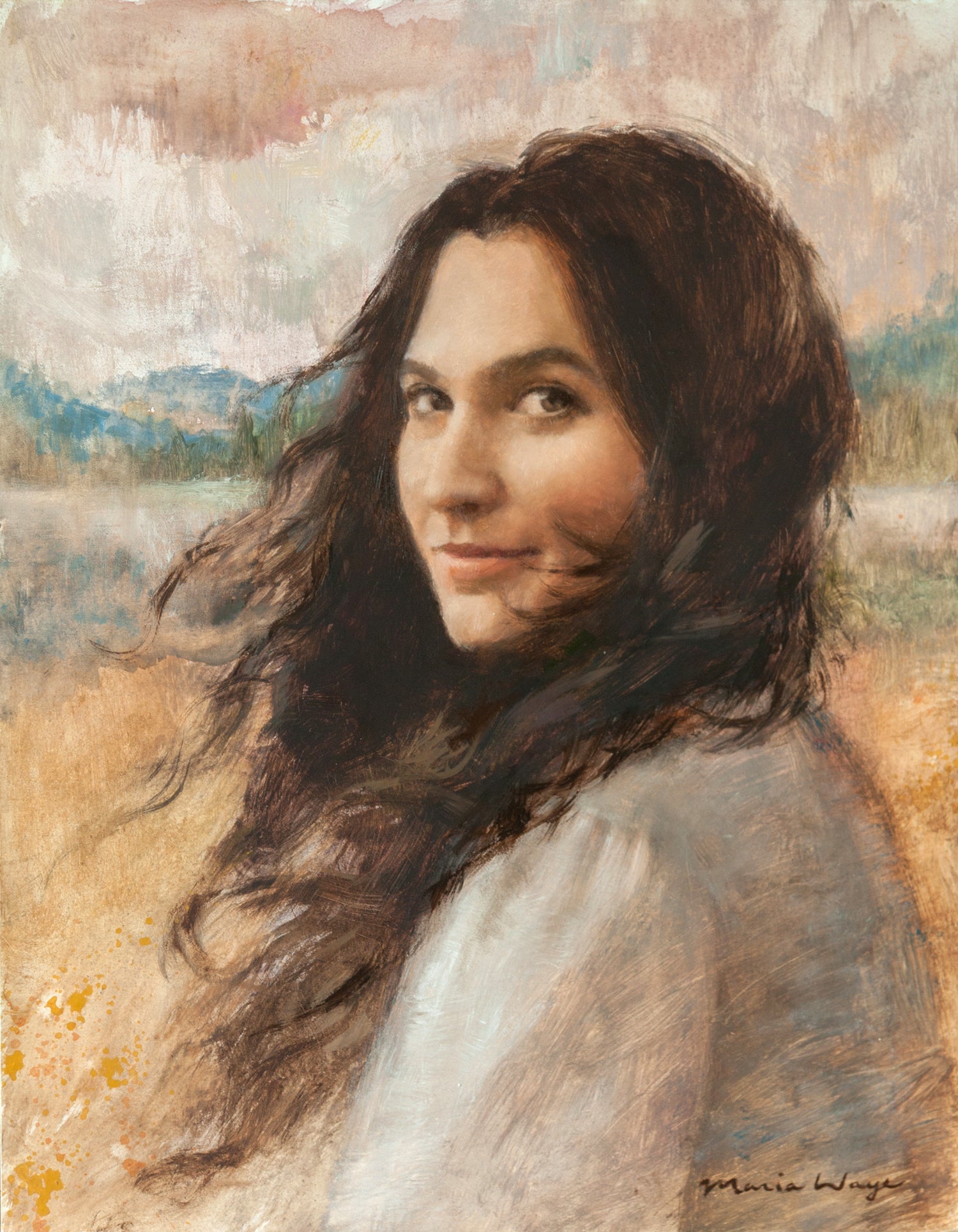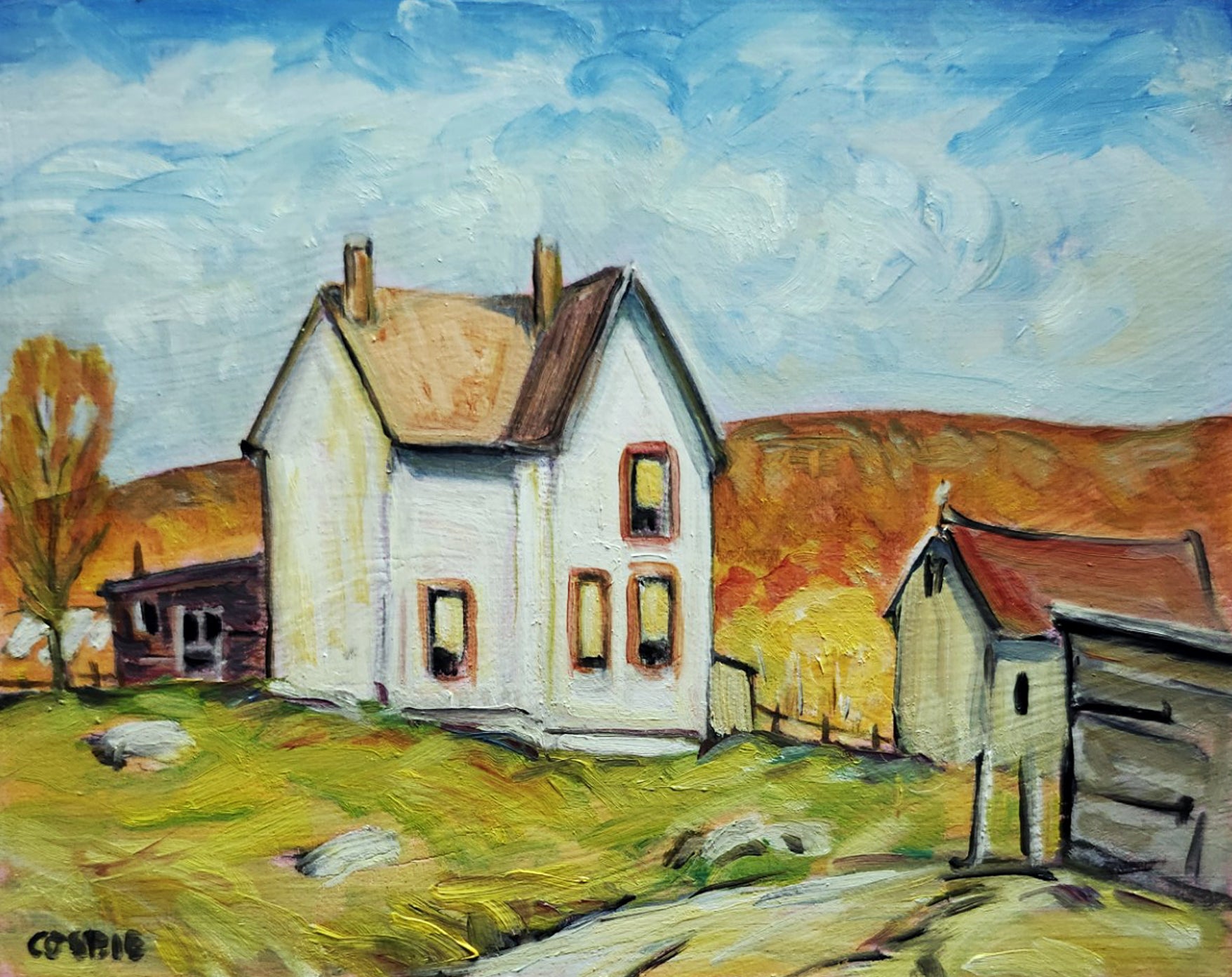Stylish Design Inspirations with Oil Paintings for Sale
Stylish Design Inspirations with Oil Paintings for Sale
Blog Article
Checking out Everything About Oil Paints: A Guide to Recognizing Their Appeal and Worth
Oil paints have actually captivated target markets for centuries, supplying a look into the artistic proficiency of numerous eras. Their rich background is linked with cutting-edge methods and profound emotional expression. Recognizing the products and methods behind these art work can enhance gratitude. Additionally, the marketplace for oil paintings presents possibilities for investors and collectors alike. As one discovers this fascinating world, the inquiry develops: what makes an oil painting absolutely important?
The History of Oil Paint: A Journey Through Time
Although oil paint has roots that go back to ancient times, it absolutely grew during the Renaissance, when musicians found its versatility and abundant color potential. Early instances can be traced to the 7th century, with methods evolving especially across societies. The medium ended up being prominent in Northern Europe in the 15th century, especially through the jobs of musicians like Jan van Eyck, who spearheaded its use for thorough realism and lively colors. This duration marked a departure from tempera paints, permitting for greater depth and structure. As oil paint spread, it affected countless musicians, causing work of arts by popular numbers such as Leonardo da Vinci and Rembrandt. The medium's heritage proceeds, forming the art world well into contemporary times.
Understanding Oil Paints: Products and Techniques
As musicians discover the globe of oil paints, they encounter a diverse array of materials and techniques that define this medium. The main components of oil paint consist of pigments, which supply color, and drying oils, such as linseed, that bind the pigments and assist in application. Numerous ingredients can change the paint's texture and drying time, improving versatility. Techniques like glazing, where transparent layers are developed, and impasto, which includes applying thick paint, enable for different aesthetic impacts. Furthermore, using brushes, scheme blades, and also fingers can produce special appearances and coatings. Understanding these methods and materials allows artists to fully express their creativity and attain the wanted effect in their art work.
The Duty of Shade in Oil Paintings
Color plays an essential function in oil paints, affecting both aesthetic charm and emotional vibration. Comprehending shade theory basics, consisting of the connections in between tones, can improve a musician's capacity to communicate mood and ambience. Furthermore, understanding color blending techniques permits for higher deepness and richness in a paint's palette.

Shade Concept Fundamentals
Comprehending color concept is vital for artists dealing with oil paints, as it develops the foundation for producing aesthetically appealing and unified structures. Shade theory encompasses the research of how shades engage, the shade wheel, and the relationships in between primary, second, and tertiary shades. Artists utilize corresponding colors to boost contrasts and create focal factors, while analogous shades promote unity and cohesiveness within a piece. In addition, the ideas of cozy and amazing colors affect the assumption of depth and area in a paint. Comprehending these principles enables artists to control shade efficiently, leading the audience's eye and connecting their designated message. Mastery of shade concept ultimately enhances a musician's ability to communicate feelings and concepts through their work.
Psychological Impact of Shade
The emotional influence of color in oil paintings plays an important duty in exactly how visitors connect and perceive with art work. Colors evoke details feelings and moods, affecting the viewer's mood. As an example, warm colors like oranges and reds can develop a sense of warmth and power, while awesome tones such as blues and environment-friendlies often evoke peace or introspection. Artists tactically select shade combinations to enhance narrative aspects, directing the audience's emotional journey. The saturation and contrast of colors even more enhance these impacts, attracting interest and creating emphasis. Inevitably, the interplay of colors in oil paints not just improves their aesthetic appeal but also serves as a powerful medium for emotional expression, improving the viewer's experience and analysis.
Shade Combining Techniques
While lots of aspects of oil painting add to the general structure, mastering shade blending strategies is crucial for attaining preferred impacts and depth. Shade blending can be approached via different methods, consisting of the subtractive and additive procedures. Additive mixing involves combining colors of light, while subtractive mixing depends on pigments, where shades blend to create brand-new tones. Artists frequently utilize a limited scheme to produce harmonious works, recognizing the relationships in between key, additional, and tertiary colors. Strategies such as glazing and scumbling additionally improve depth and luminosity. By skillfully mixing shades, an artist can stimulate emotions, develop centerpieces, and achieve a sense of realism, ultimately boosting the painting's emotional and visual impact.
Famous Oil Painters and Their Iconic Functions

Famed for their mastery of color and method, oil painters have actually developed some of the most renowned art work in history. Distinguished musicians like Vincent van Gogh astounded target markets with his stirring brushwork in "Starry Evening," while Claude Monet's "Perception, Daybreak" prepared for Impressionism. Leonardo da Vinci's "Mona Lisa" remains an enduring icon of imaginative genius, showcasing his skill in catching human expression. Rembrandt's "The Night Watch" shows his cutting-edge usage of light and darkness. Other notable figures include Pablo Picasso, who reinvented modern-day art with his vibrant experimentation in works like "Les Demoiselles d'Avignon," and Georgia O'Keeffe, whose vibrant depictions of landscapes and flowers assisted specify American modernism. Each artist's special design added greatly to the oil paint landscape.
Just how to Review the High Quality of an Oil Paint
Reviewing the top quality of an oil paint includes a cautious evaluation of craftsmanship techniques, as well as an analysis of shade and make-up. Observing brushwork, layering, and the application of paint can disclose the musician's skill degree. Furthermore, the interplay of shades and the total plan of components add significantly to the painting's visual value.
Analyzing Workmanship Techniques
A thorough evaluation of more info workmanship methods is important for establishing the high quality of an oil paint. Evaluators must initially analyze the application of paint; thick, distinctive brushstrokes may recommend a competent hand, while extremely uniform applications might indicate a lack of deepness. oil paintings for sale. The layering method is also vital; the visibility of glazes and differed density can enhance brightness and intricacy. Additionally, the top quality of the products used, such as the canvas and pigments, plays a substantial function in durability and general visual. Focus to detail in aspects like sides and changes in between colors reflects the artist's commitment to their craft. Inevitably, these strategies add to the painting's psychological impact and market price, working as signs of the artist's skill and intent
Assessing Shade and Structure
While evaluating the high quality of an oil paint, one should concentrate on the interplay of color and make-up, as these elements are essential to the art work's overall effect. Shade choices can stimulate emotions and establish state of mind; for that reason, the artist's combination need to be examined for harmony and contrast. A well-balanced make-up guides the audience's eye and develops a feeling of unity. Artists commonly utilize strategies like the rule of thirds or leading lines to improve visual rate of interest. Furthermore, the usage of light and shadow can add depth, enhancing the three-dimensionality of the paint. Inevitably, an effective oil painting marries color and make-up, involving the viewer and inviting a deeper appreciation of the musician's vision and method.
Caring for and Preserving Oil Paintings
Proper treatment and conservation of oil paintings is important for maintaining their honesty and durability. To secure these artworks, it is important to display them far from direct sunlight, which can create fading and discoloration. Maintaining a secure setting with controlled temperature level and moisture further help in protecting against damage. Cleaning up must be done carefully making use of a soft, dry cloth, preventing any kind of rough chemicals that can harm the paint or varnish. Normal assessments for signs of deterioration, such as fracturing or flaking, are advisable. When saving or carrying oil paintings, appropriate extra padding and framing are essential to prevent physical injury. Ultimately, thorough care adds to the visual appeal and worth of oil paints in time.
The Marketplace for Oil Paintings: Gathering and Spending
Recognizing the market characteristics for oil paints is crucial for investors and collection agencies alike. The worth of these art work is influenced by different aspects, including the artist's track record, historic significance, and existing trends. Collectors commonly look for items that resonate personally while thinking about prospective appreciation in value. Galleries and auctions function as main places for trading, with costs changing based upon need and rarity. Buying oil paints calls for study right into the market, as well as an understanding of authenticity and provenance. Additionally, arising musicians might use possibilities for substantial returns, while developed names can command high costs. Generally, a critical strategy to accumulating can produce both visual satisfaction and financial incentives.

Often Asked Concerns
What Are the Ecological Influences of Oil Paint Materials?
The environmental effects of oil paint products consist of the launch of unstable organic compounds (VOCs), damaging waste generation, and resource extraction for pigments. These factors contribute to pollution and environmental degradation, increasing problems among eco aware artists and customers.
Exactly How Do Various Canvases Impact Oil Painting Results?
Different canvases influence oil paint results considerably. Absorbency, surface area, and appearance quality can modify paint application, drying out times, and shade vibrancy. Artists typically select particular canvases to achieve wanted results and improve their creative expression.
Can Oil Paintings Be Brought Back if Damaged?
If damaged, Oil paints can undoubtedly be brought back. Professional conservators utilize numerous methods to repair rips, tidy surfaces, and address discoloration, guaranteeing that the art work preserves its original beauty and worth for future generations.
What Are the Indications of an Original Oil Paint?
The indications of an original oil paint include noticeable brush strokes, structure variations, and an irregular canvas weave (oil paintings for sale). Furthermore, credibility may be validated with provenance, signatures, and the visibility of a varnish layer one-of-a-kind to oil mediums
Just How Has Innovation Influenced Modern Oil Paint Techniques?
Innovation has actually substantially influenced modern-day oil painting strategies by presenting digital devices for planning, improved products for structure and longevity, and on the internet systems for marketing and sharing art, thus increasing artists' innovative opportunities and audience reach. Oil painting has roots that date back to old times, it absolutely prospered during the Renaissance, when musicians uncovered its flexibility and abundant shade potential. The emotional effect of shade in oil paintings plays a critical duty in how customers regard and connect with art work. While many aspects of oil painting add to the total make-up, mastering color mixing methods is crucial for accomplishing wanted effects and depth. Assessing the high quality of an oil paint entails a mindful assessment of craftsmanship methods, as well as an analysis of color and structure. While examining the top quality of an oil paint, one have to concentrate on the interaction of shade and make-up, as these components are basic to the art work's total influence.
Report this page